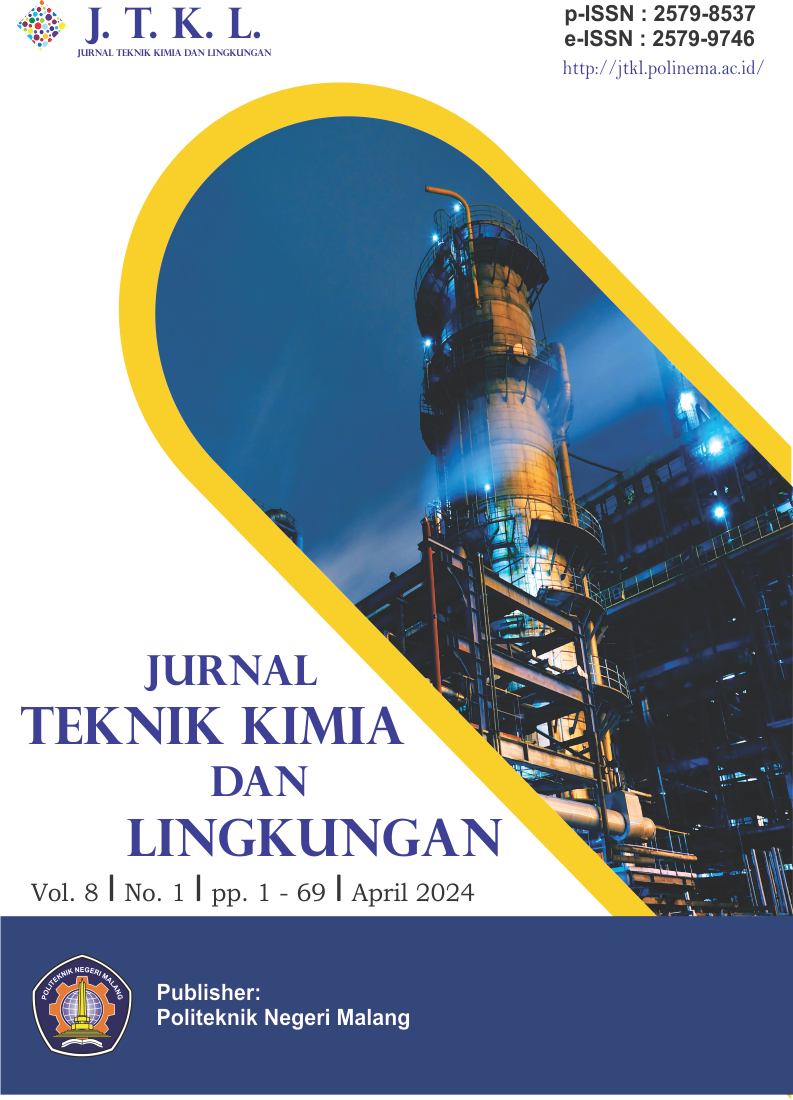Study of Palm Oil Shell Utilization as Metallurgical Coke with Variation of Bondcrete Additive
DOI:
https://doi.org/10.33795/jtkl.v8i1.4811Keywords:
coke, iron ore, palm kernel shell, pyrolisis, smelterAbstract
Coke, an essential ingredient in the steel and metallurgical industries, is typically derived from bituminous coal. However, in Indonesia, where bituminous coal is rare, coke production is dependent on coal imports due to the high moisture content of local coal. An alternative approach is to use biomass, such as palm oil processing waste, for "biomass coke" to produce a more environmentally friendly coke with lower greenhouse gas emissions. Palm kernel shell waste rich in lignocellulose proved suitable for this purpose due to its compressive strength and carbon content. Pyrolysis, a technique for creating porous micro-structured carbon from palm kernel shells, was used to produce this coke substitute, offering a more sustainable energy source with a lower carbon footprint than fossil fuels. Bio-coke exhibits low moisture content (5.84%) and ash content (13.20%) due to the moisture and ash reduction effects of bondcrete adhesive during combustion. It also demonstrates substantial compressive strength (14 mPa), a high calorific value (6795 cal/g), and a favorable pore structure with a large surface area, indicating a positive influence of bondcrete adhesive on coke properties without compromising energy potential.
References
M. Gunara, Potensi Batubara Sebagai Sumber Energi Alternatif Untuk Pengembangan Industri Logam, Semin. Nas. Teknoka, vol. 2, no. 1, pp. 22–27, 2017.
H. Talla, H. Amijaya, A. Harijoko, M. Huda, Karakteristik Batubara dan Pengaruhnya Terhadap Proses Pencairan, Reaktor, vol. 14, no. 4, pp. 267–271, 2014.
D. Schoene, W. Killmann, H. von Lüpke, M. L. Wilkie, Definitional issues related to reducing emissions from deforestation in developing countries, Food and Agriculture Organization of the United Nations, Rome, 2007.
J. Riaza, J. Gibbins, H. Chalmers, Ignition and combustion of single particles of coal and biomass, Fuel, vol. 202, pp. 650–655, 2017.
M. R. Assis, L. Brancheriau, A. Napoli, P. F. Trugilho, Factors affecting the mechanics of carbonized wood: literature review, Wood Sci. Technol., vol. 50, pp. 519–536, 2016.
A. Nadia, A. Fauziah, S. Sunardi, E. Mayori, Potensi limbah lignoselulosa kelapa sawit di Kalimantan Selatan untuk produksi bioetanol and xylitol, J. Inov. Pendidik. Sains, vol. 8, pp. 41–51, 2017.
A. Demirbaş, G. Arin, An overview of biomass pyrolysis, Energy Sources, vol. 24, no. 5, pp. 471–482, 2002.
G. R. Surup, A. Trubetskaya, M. Tangstad, Charcoal as an alternative reductant in ferroalloy production: A review, Processes, vol. 8, no. 11, pp. 1–41, 2020.
I. Ardiansyah, A. Y. Putra, Y. Sari, Analisis Nilai Kalor Berbagai Jenis Briket Biomassa Secara Kalorimeter, J. Res. Educ. Chem., vol. 4, no. 2, pp. 120–133, 2022.
M. R. Aziz, A. L. Siregar, A. B. Rantawi, I. B. Rahardja, Pengaruh Jenis Perekat Pada Briket Cangkang Kelapa Sawit Terhadap Waktu Bakar, Pros. Semnastek, 2019.
Y. Setiawan, Karakteristik Campuran Cangkang dan Serabut Buah Kelapa Sawit Terhadap Nilai Kalor di Propinsi Bangka Belitung, Turbo J. Progr. Stud. Tek. Mesin, vol. 1, no. 1, pp. 38–43, 2016.
S. M. Ridjayanti, R. A. Bazenet, W. Hidayat, I. S. Banuwa, M. Riniarti, Pengaruh variasi kadar perekat tapioka terhadap karakteristik briket arang limbah kayu sengon (Falcataria moluccana), Perennial, vol. 17, no. 1, pp. 5–11, 2021.
M. Setiawati, Fly ash sebagai bahan pengganti semen pada beton, Pros. Semnastek, 2018.
R. B. Cahyono, G. Saito, N. Yasuda, T. Nomura, T. Akiyama, Porous ore structure and deposited carbon type during integrated pyrolysis-tar decomposition, Energy and Fuels, vol. 28, no. 3, pp. 2129–2134, 2014.
Z. F. Safitri, A. W. Pangestika, F. Fauziah, V. N. Wahyuningrum, Y. Astuti, The influence of activating agents on the performance of rice husk-based carbon for sodium lauryl sulfate and chrome (Cr) metal adsorptions, IOP Conference Series: Materials Science and Engineering, vol. 172, no. 1, pp. 12007, 2017.
O. Bazaluk, L. Kieush, A. Koveria, J. Schenk, A. Pfeiffer, H. Zheng, V. Lozynskyi., Metallurgical Coke Production with Biomass Additives: Study of Biocoke Properties for Blast Furnace and Submerged Arc Furnace Purposes, Materials (Basel)., vol. 15, no. 3, pp. 1147, 2022.
Downloads
Published
Issue
Section
License
Copyright (c) 2024 Asful Hariyadi, Dinda Khoirunnisa Hidayat, Moch. Purwanto

This work is licensed under a Creative Commons Attribution-NonCommercial 4.0 International License.







